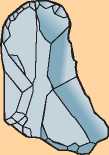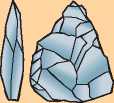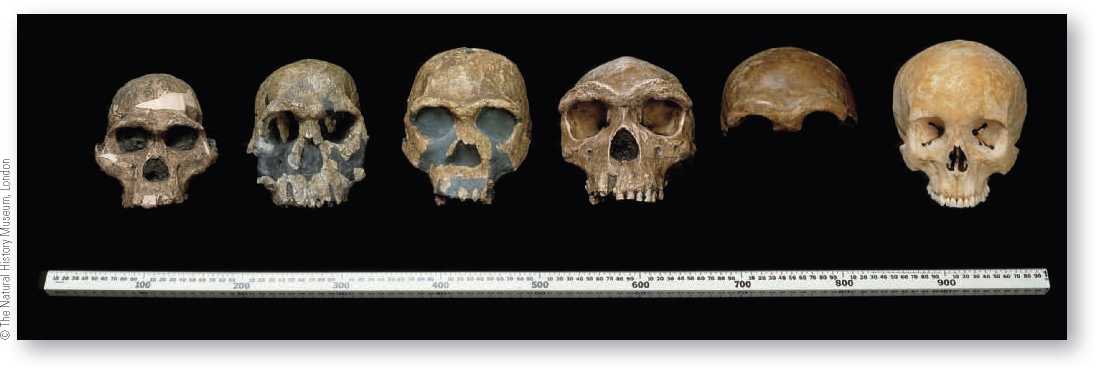While the large-brained Neandertals inhabited Europe and Southwest Asia, other parts of the world were inhabited by variants of archaic H. sapiens; these lacked the extreme midfacial projection and massive muscle attachments on the back of the skull characteristic of the Neandertals. Skulls found in Java, Africa, and China date from roughly the same time period.
Eleven skulls found near the Solo River in Ngandong, Java, are a prime example. These skulls indicated modernsized brains ranging from 1,013 to 1,252 cc, while retaining features of earlier Javanese H. erectus. When their dating was recently revised (to between 27,000 and 53,000 years ago) some researchers concluded that this proved a late survival of H. erectus in Asia, contemporary with H. sapiens elsewhere. But the Ngandong skulls remain what they always were: representatives of archaic H. sapiens, with modern-sized brains in otherwise ancient-looking skulls.
Fossils from various parts of Africa show a similar combination of ancient and modern traits. Equivalent remains have been found at several localities in China. Thus the Neandertals could be said to represent an extreme form of archaic H. sapiens. Elsewhere, the archaics look like robust versions of the early modern populations that lived in the same regions or like somewhat more derived versions of the H. erectus populations that preceded them. All appear to have contained modern-sized brains, with their skulls retaining some ancestral features.
Borer

Endscraper

Double scraper

Hand axe


The original Neandertal cranium discovered in the Neander Valley, Germany, in 1856 (the only one without a face) is depicted here with earlier fossils and a cranium from contemporary Homo sapiens. The other fossils, from the left, are a gracile australopithecine; Homo habilis (KNM ER 1470) discovered at Koobi Fora, Kenya; Homo erectus also from Koobi Fora; and an African archaic Homo sapiens from Kabwe, Zambia. Increasing cranial capacity over time is evident from this series as is the fact Neandertal brains are in the modern human range. Even without the Neandertal face, some of the differences in the shape of the skull compared to H. sapiens are evident. The African archaic H. sapiens is also quite different from the contemporary skeleton.




 World History
World History









